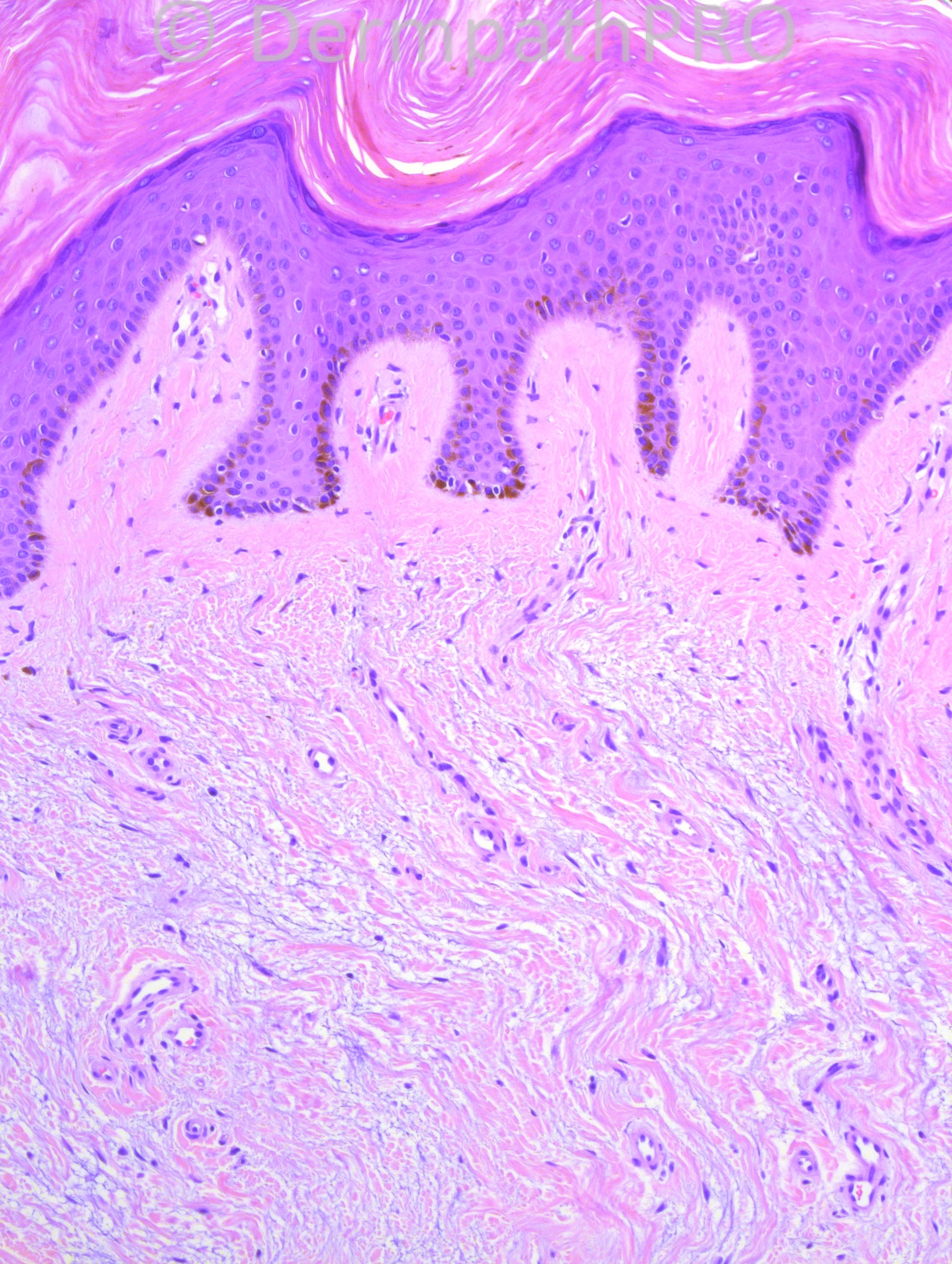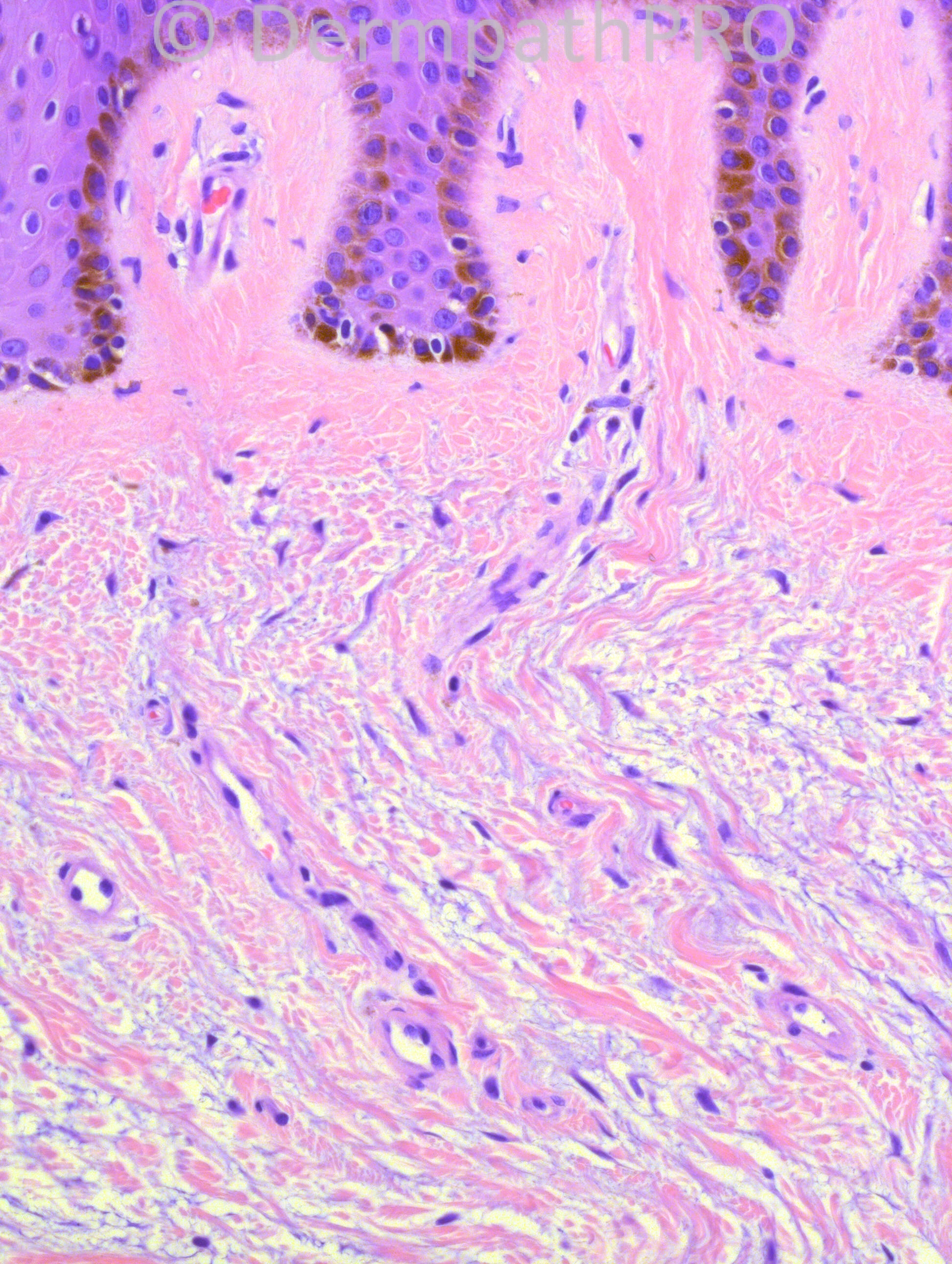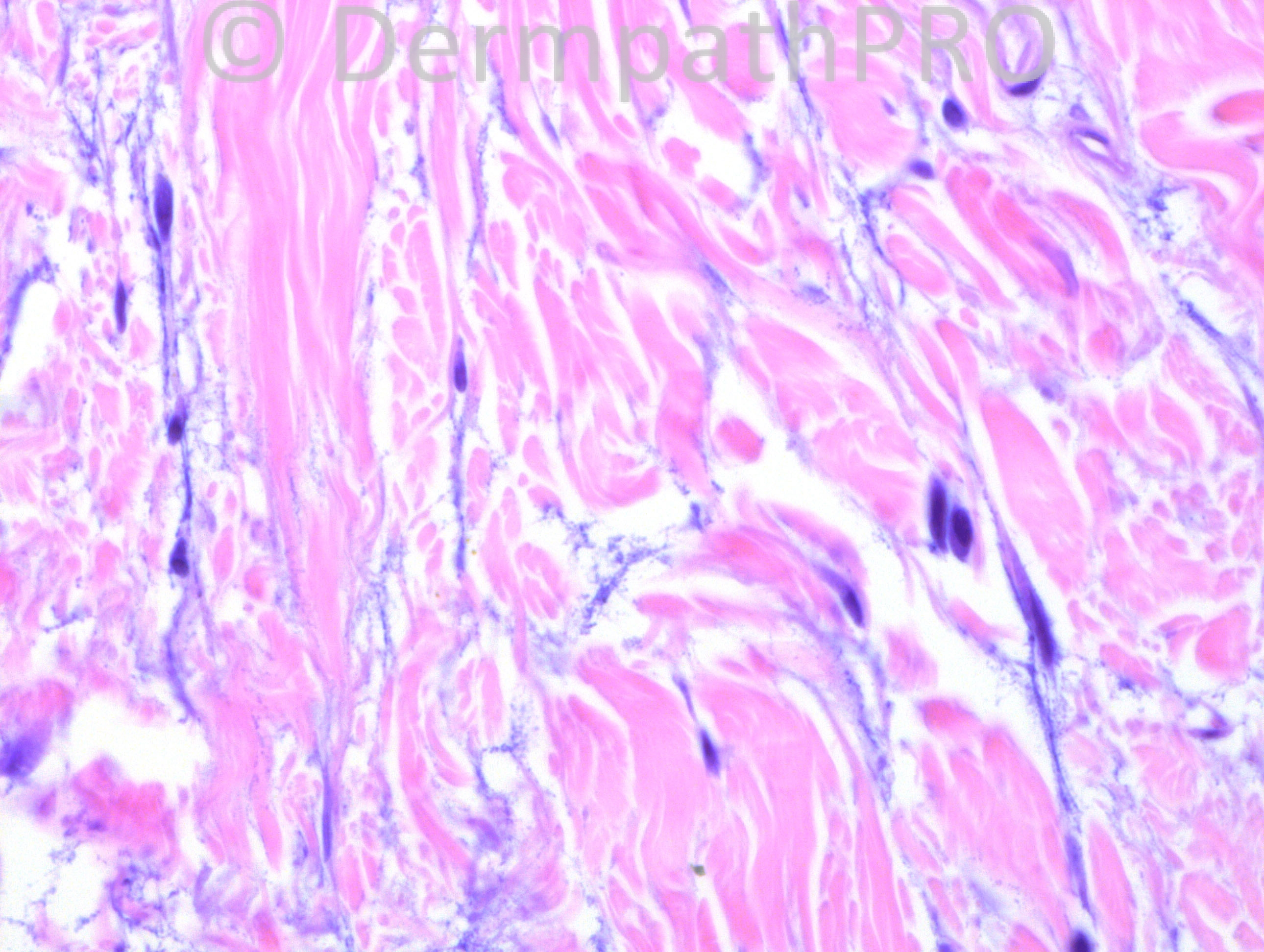Case Number : Case 794 - 3rd July Posted By: Guest
Please read the clinical history and view the images by clicking on them before you proffer your diagnosis.
Submitted Date :
49 years-old female with raised lesions on feet and lower legs. The biopsy is from the left foot.
Case posted by Dr. Hafeez Diwan.
Case posted by Dr. Hafeez Diwan.





Join the conversation
You can post now and register later. If you have an account, sign in now to post with your account.